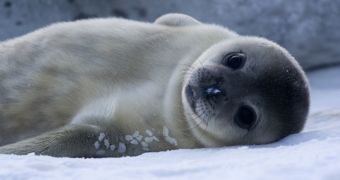Afghanistan has recently established its second national park and, by the looks of it, Australia has no intention to fall behind when it comes to safeguarding biodiversity. Thus, news from this part of the world says that the country has set up its largest marine sanctuary yet.
Information shared with the public says that Australia created its largest marine marine reserve by adding 6,200 square kilometers (2,393 square miles) of fully protected waters to its Heard Island and McDonald Islands Marine Reserve.
These islands are located at a distance of about 4,100 kilometers (2,547 miles) south-west of Perth, Western Australia, and are considered some of the most remote places on our planet. They are home to quite a lot of animal species such as penguins, seals, and seabirds.
What's more, rare marine mammal species such as beaked and bottlenose whales have been documented to swim in these waters, wildlife researchers explain.
According to the Australian Antarctic Division, i.e. a division of the Department of Sustainability, Environment, Water, Population and Communities, the marine sanctuary is “one of the most biologically pristine areas in the world.”
With the addition of said 6,200 square kilometers, the Heard Island and McDonald Islands Marine Reserve has come to span over 71,200 square kilometers (27,490 square miles) of ocean, The Guardian informs.
The same source tells us that, following its expansion, the Heard Island and McDonald Islands Marine Reserve has come to be named the largest fully protected area by the International Union for Conservation of Nature.
The fact that the region is fully protected means that people can only visit it every once in a while, and that such visits must be limited to carrying out scientific research or environmental monitoring. Thus, all activities that might upset local ecosystems are strictly off-limits.
Just for the record, it must be said that these islands are presently uninhabited, and odds are the animals that call this region their home aren't exactly dying to have humans as neighbors.
Commenting on Australia's establishing its largest fully protected marine sanctuary yet, Michelle Grady with the Pew Charitable Trusts argued, “The decision to create Australia’s largest A-class sanctuary for marine life reinforces the clear science evidence of the essential role of large ‘no take’ areas in safeguarding a diversity of life.”
“This landmark decision showcases the benefits that large sanctuaries deliver to all of us, whether they are commercial or broader environmental benefits,” added Darren Kindleysides with the Australian Marine Conservation Society.

 14 DAY TRIAL //
14 DAY TRIAL //